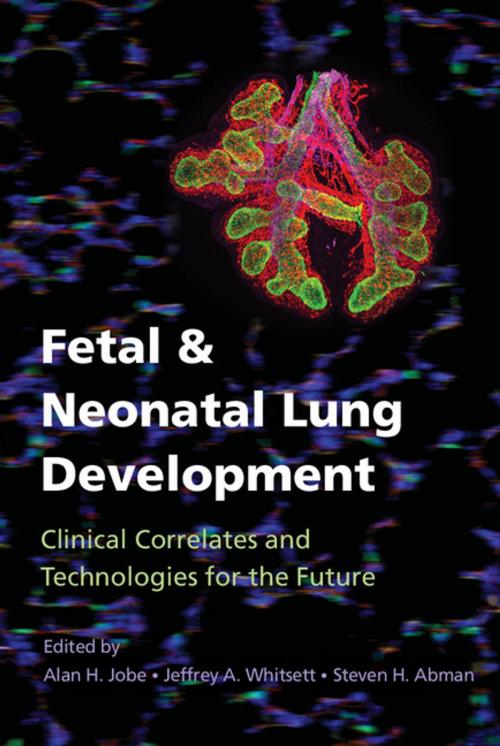Fetal and Neonatal Lung Development
Clinical Correlates and Technologies for the Future
Nonfiction, Health & Well Being, Medical, Specialties, Pediatrics, Gynecology & Obstetrics| Author: | ISBN: | 9781316665053 | |
| Publisher: | Cambridge University Press | Publication: | April 18, 2016 |
| Imprint: | Cambridge University Press | Language: | English |
| Author: | |
| ISBN: | 9781316665053 |
| Publisher: | Cambridge University Press |
| Publication: | April 18, 2016 |
| Imprint: | Cambridge University Press |
| Language: | English |
Lung disease affects more than 600 million people worldwide. While some of these lung diseases have an obvious developmental component, there is growing appreciation that processes and pathways critical for normal lung development are also important for postnatal tissue homeostasis and are dysregulated in lung disease. This book provides an authoritative review of fetal and neonatal lung development and is designed to provide a diverse group of scientists, spanning the basic to clinical research spectrum, with the latest developments on the cellular and molecular mechanisms of normal lung development and injury-repair processes, and how they are dysregulated in disease. The book covers genetics, omics, and systems biology as well as new imaging techniques that are transforming studies of lung development. The reader will learn where the field of lung development has been, where it is presently, and where it is going in order to improve outcomes for patients with common and rare lung diseases.
Lung disease affects more than 600 million people worldwide. While some of these lung diseases have an obvious developmental component, there is growing appreciation that processes and pathways critical for normal lung development are also important for postnatal tissue homeostasis and are dysregulated in lung disease. This book provides an authoritative review of fetal and neonatal lung development and is designed to provide a diverse group of scientists, spanning the basic to clinical research spectrum, with the latest developments on the cellular and molecular mechanisms of normal lung development and injury-repair processes, and how they are dysregulated in disease. The book covers genetics, omics, and systems biology as well as new imaging techniques that are transforming studies of lung development. The reader will learn where the field of lung development has been, where it is presently, and where it is going in order to improve outcomes for patients with common and rare lung diseases.















